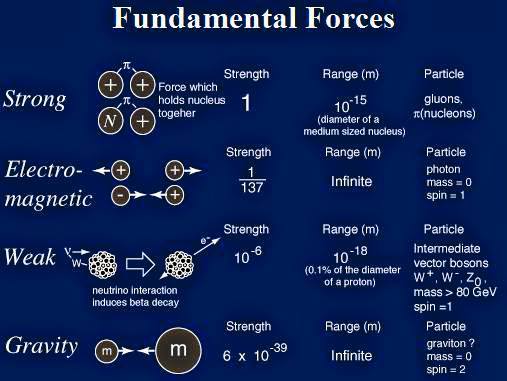The strong force, also known as the strong nuclear force or strong interaction, is one of the four fundamental forces of nature, alongside gravity, electromagnetism, and the weak nuclear force. It is the force that binds protons and neutrons together within the nucleus of an atom, overcoming the repulsive electromagnetic force that exists between protons due to their positive charges. But what if the strong force faltered? What would a world devoid of this fundamental interaction look like? This provocative consideration invites an exploration of the strong force, its mechanics, and its pivotal role in the grand tapestry of the universe.
When delving into the intricacies of the strong force, it is essential to recognize its domain: the subatomic realm. This force operates over an incredibly short range—approximately the diameter of a proton—yet it wields immense power, capable of holding together particles that would otherwise repel one another. This phenomenon manifests through the exchange of particles known as gluons, which serve as the mediators of the strong force. Gluons are massless, allowing for their rapid exchange, and as such, they enable quarks, the fundamental constituents of protons and neutrons, to experience a robust attraction.
The strong force is not merely a passive binding agent; it is an emergent property of the interactions between quarks, which are perpetually confined within hadrons (the particles composed of quarks). This confinement is a fundamental aspect of Quantum Chromodynamics (QCD), the theoretical framework that describes the interactions of quarks and gluons. One might ponder: how do we reconcile the scale at which these interactions occur with the observable phenomena in the macroscopic realm? The answer lies in the unique characteristics of the strong force, particularly its property of asymptotic freedom, whereby quarks become less interactive as they come closer together, yet more so as they move apart. This unusual behavior leads to the intriguing concept of “color confinement,” wherein quarks are perpetually bound together, never existing independently within the vacuum of space.
As we navigate this captivating landscape, we encounter the concept of potential energy in relation to the strong force. The potential energy associated with the strong interaction resembles that of a rubber band—it increases as quarks attempt to separate, leading ultimately to a phenomenon known as hadronization. At this juncture, the energy instigated by pulling quarks apart becomes sufficient to produce new quark-antiquark pairs, resulting in the formation of additional hadrons. This observation raises an intriguing question: is the strong force not only a binding mechanism but also a source of creativity in the particle world? Indeed, it appears to be a catalyst for diversity, birthing a plethora of particles under various conditions, particularly in high-energy environments like those found in particle accelerators.
Moreover, the implications of the strong force extend beyond mere particle interactions. They reverberate through the realms of cosmology and the early universe’s formation. In the moments following the Big Bang, as the universe expanded and cooled, the strong force became a linchpin in the synthesis of atomic nuclei during a period termed Big Bang nucleosynthesis. Without the strong force, the universe would have failed to coalesce into the rich variety of elements necessary for the formation of stars, planets, and, ultimately, life.
A question that naturally arises pertains to the experimental challenges associated with probing the strong force. Unlike electromagnetism, which can be experimentally isolated and studied with relative ease, the strong force resists isolation due to its confinement properties. This has led physicists to devise ingenious methods for studying the strong interaction indirectly, such as through high-energy collision experiments in particle accelerators like the Large Hadron Collider (LHC). These experiments allow researchers to scrutinize the byproducts of high-energy collisions, providing invaluable insights into the nature of quarks and gluons, as well as the nuances of QCD.
Furthermore, investigations into the strong force offer a gravitational insight into the fabric of our universe. The mass-energy equivalence, famously encapsulated in Einstein’s equation E=mc², reveals how energy concentrated within the strong force contributes significantly to the mass of protons and neutrons. Given that these nucleons constitute the majority of the universe’s visible mass, the strong force is intrinsically linked to the very structure of matter itself. As a result, understanding the strong force transcends theoretical curiosity; it has profound ramifications for astrophysics and our comprehension of stellar processes, supernovae, and the behavior of matter under extreme conditions.
Despite the spectacular strides made in our understanding of the strong force, challenges still abound. The confinement of quarks and gluons remains an enigmatic aspect of QCD, leading to ongoing discussions about the fundamental principles governing these interactions. Efforts to devise unifying theories, such as string theory, aim to reconcile the principles of quantum mechanics with those of general relativity, with the strong force playing a critical role in these explorations.
In conclusion, the strong force stands as a cornerstone of our understanding of the universe, compelling us to reflect on the delicate balance that enables the existence of all matter. Its role in binding atomic nuclei, facilitating the synthesis of elements, and maintaining the integrity of matter underscores its significance in both theoretical and applied physics. The exploration of this formidable force continues to challenge physicists and deepen our understanding of the cosmos, capturing the curiosity of those who dare to ponder: what lies beyond the visible forces that shape our reality?












